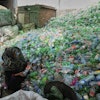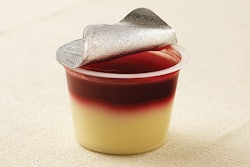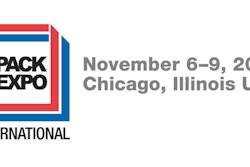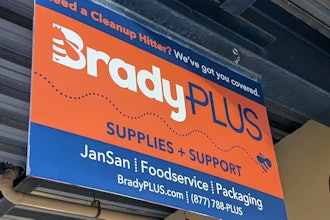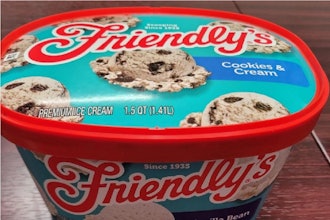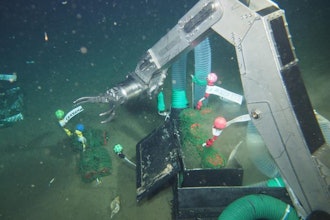Over the course of the two weeks leading up to PACK EXPO International 2016, Food Manufacturing is publishing a number of pieces of show preview content. We had the opportunity to connect with several companies exhibiting at the annual event for a quick look at topics and trends in their segment of the food and beverage industry, along with a preview of what products/technologies those companies will have on display at PACK EXPO International.
In this installment, we check in with Stacy Johnson, Senior Marketing Manager at Dorner Manufacturing, who discusses topics and trends in conveying, and highlights what the company will have on display at booth N-5945.
Q. What are the latest trends in conveying in the food manufacturing industry?
A. The dominant issue lately affecting conveying in the food industry is compliance with the Food Safety Modernization Act. This law has really shined a spotlight on the kinds of equipment food manufacturers and processors are using in their facilities. The industry is very concerned about contamination and the crippling, lasting affects it can have on their brand. Nothing can erode consumer confidence in your brand faster than having a major product recall or highly publicized contamination outbreak. Then you add in the role that social media can play in these types of events — bad news spreads fast. So, when you factor all these issues together, we’re seeing the industry responding by taking a hard look at their equipment, and making upgrades to guard against contamination.
Another trend we continue to see isn’t really a new one, but a trend that seems to be steadfast with our customers — their desire to quickly clean and sanitize their conveyors. The industry is asking for conveyor systems to be sanitary in design, but they also want to be able to clean their conveyors and sanitize them in as little time as possible. They’re not looking to have a system down for an hour or two after each shift to clean equipment. That’s lost time and revenue. Being able to minimize downtime makes a difference in the level of production. This trend of speed in cleaning is something we suspect is here to stay.
Q. What are important factors for food manufacturing companies to consider when looking to add conveyors at their facilities?
A. One of the most important factors for food manufacturers to consider when looking to add conveyors into their facilities is to know what level of sanitation they’ll need. For starters, there seems to be a misconception that stainless steel conveyors are sanitary — that’s simply not true in some cases. And what’s been happening is that some people are purchasing stainless steel conveyors thinking they’re getting a sanitary conveyor. There’s a big difference between the two.
Stainless steel is certainly the right material to use in applications that call for regular washings with light chemical cleaning agents. A basic stainless steel conveyor can be washed throughout the day as needed, depending on how it is built, but it’s not necessarily sanitized. That’s because sanitizing or cleaning a conveyor involves an entirely different process than simply washing it down, and much of achieving a sanitized conveyor depends on the way it was initially designed.
Small nooks, crevices and fasteners can become catch points for water, food particles, and other particulates — which are the perfect breeding environments for bacteria to grow. The solution is eliminating all catch points from the conveyor. This means squared-off edges are rounded to allow water and particulates to run off, while also reducing the number of fasteners required in the food zone for easy cleaning. In researching sanitary conveyors, here are some questions to consider helping you select the right platform:
- Where is the conveyor going to be located in your plant?
- How accessible is the conveyor to take it apart?
- Is it easy to disassemble, and can disassembly be performed by one person with no tools?
- Can you effectively wash and sanitize the conveyor because it’s designed properly?
- Is the conveyor truly going to meet your sanitary expectations?
As you can see from the bullet points, it’s important to identify where along the processing/packaging line the conveyor will be located to select the right platform. For applications more downstream in processing where the conveyor is moving sealed and packaged food, the conveyor might not need to be as hygienic as those carrying raw food and ingredients. These conveyors often accumulate corrugated dust from the cardboard packaging, and that can be cleaned by washing or simply wiping down the conveyor. This conveyor is still sanitary in design, but for this application the more robust sanitary platform isn’t commonly required. If the conveyor is moving, for example, raw chicken, that platform will need to be completely disassembled and cleaned with appropriate cleaning agents often. Both conveyors are sanitary, but the one on the processing side needs to be more robust in sanitary attributes than a one moving just packaged food.
Q. What impact has FSMA compliance had on companies that make conveyors for food manufacturing companies?
A. For Dorner, the FSMA hasn’t really had much of an impact on the way we engineer our sanitary conveyors, because we’ve been offering very high level sanitary platforms (AquaPruf/AquaGard) long before the FSMA was announced. We’ve been at the forefront of building our two platforms with strong design attributes to make them a truly sanitary platform, such as removing small nooks, crevices and fasteners can become catch points for water, food particles, and other particulates — which are the perfect breeding environments for bacteria to grow. Features like rounding squared edges to allow water and particulates to run off, while also reducing the number of fasteners required in the food zone for easy cleaning. It’s design attributes like these and others that turn a conveyor into a truly sanitary platform.
Additionally, our AquaPruf and AquaGard platforms are recognized for their sanitary standards as they meet Baking Industry Sanitary Standards Committee (BISSC), National Sanitation Foundation (NSF) and FDA regulations. Additionally, our AquaPruf 7400 and 7600 Ultimate platforms are the only USDA certified conveyors operating in the industry; they’re the only modular conveyors on the agency’s list of accepted equipment for the meat and poultry industry.
Q. What products/technologies for the food manufacturing industry will Dorner be exhibiting at PACK EXPO International?
A. One of our newer conveyors that we’ll be showcasing at PACK EXPO 2016 is our AquaPruf Vertical Belt Conveyor, which is designed to move bulk products in straight-up 90° sanitary applications. The conveyor features a proprietary staggered sidewall belt that’s easy to clean and improves product release. The AquaPruf Vertical Belt Conveyor is a good example of how conveyors are being asked to do more within the food manufacturing industry. Before we launched this product, there really wasn’t a true sanitary conveyor that could move bulk items in a straight-up application. The AquaPruf Vertical Belt Conveyor fills this role perfectly. The sanitary staggered sidewall belt holds bulk product, but yet is easy to clean and quicker to replace damaged sections than more traditional bucket elevator-type belts. Another important sanitary design feature in the conveyor is its open frame design, which aides in cleaning by giving operators full access.




